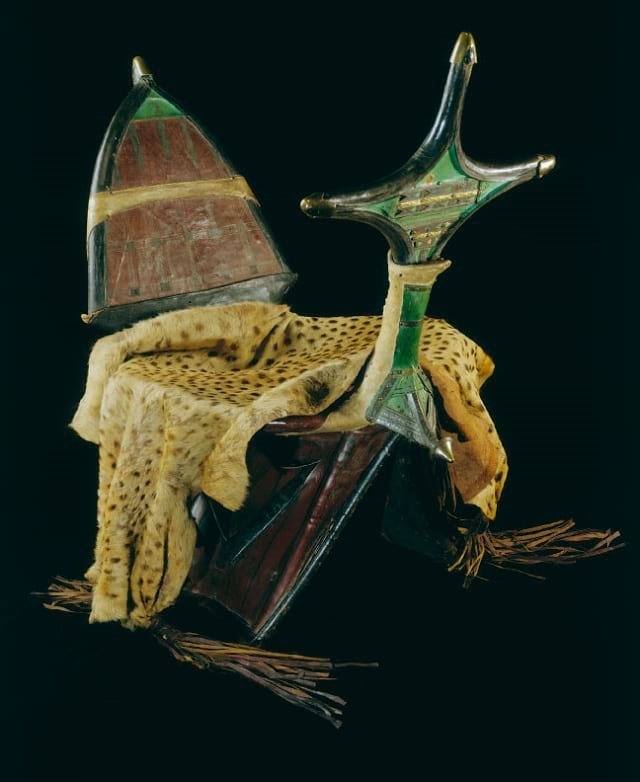Camel saddle (tarik or tamzak)
- Object Name
- Camel saddle (tarik or tamzak)
- Culture / Site
- Tuareg, Algerian Sahara
- Medium
- Leather, rawhide, wood, parchment or vellum, wool, silk, tin-plated metal, brass-plated metal, iron, copper alloy, and cheetah skin
- Date
- Date unknown (probably 20th century)
- Dimensions
- 75 x 71 x 46 cm
- Credit Line
- Peabody Museum of Archaeology and Ethnology, Harvard University, Cambridge, MA, gift of the Estate of Dr. Lloyd Cabot Briggs, 1975, 975-32-50/11927. Photograph © President and Fellows of Harvard College, Peabody Museum of Archaeology and Ethnology
- Section
- Saharan Echoes
- Description
Until the widespread domestication of the camel in the early centuries of the Common Era, historians believe, trans-Saharan trade and exchange was quite rare. Camels are ideal for Saharan movement: they rarely sweat, even in hot desert climates, and can conserve fluids for long periods of time. With camels to ride and to carry loads, the Tuareg and other Imazighen peoples of the Sahara once controlled the caravan routes that stretched across the desert. Their economy was based on herding and supplemented by the trade of salt. Tuareg nobility depended on artisans to produce wood, metal, and leather goods like this saddle. This example is too ornate to have been used for lengthy travel. It was made by covering a wooden core with dyed and tooled leather and then decorating the pommel and other parts with metal embellishments filled with geometric patterns.
